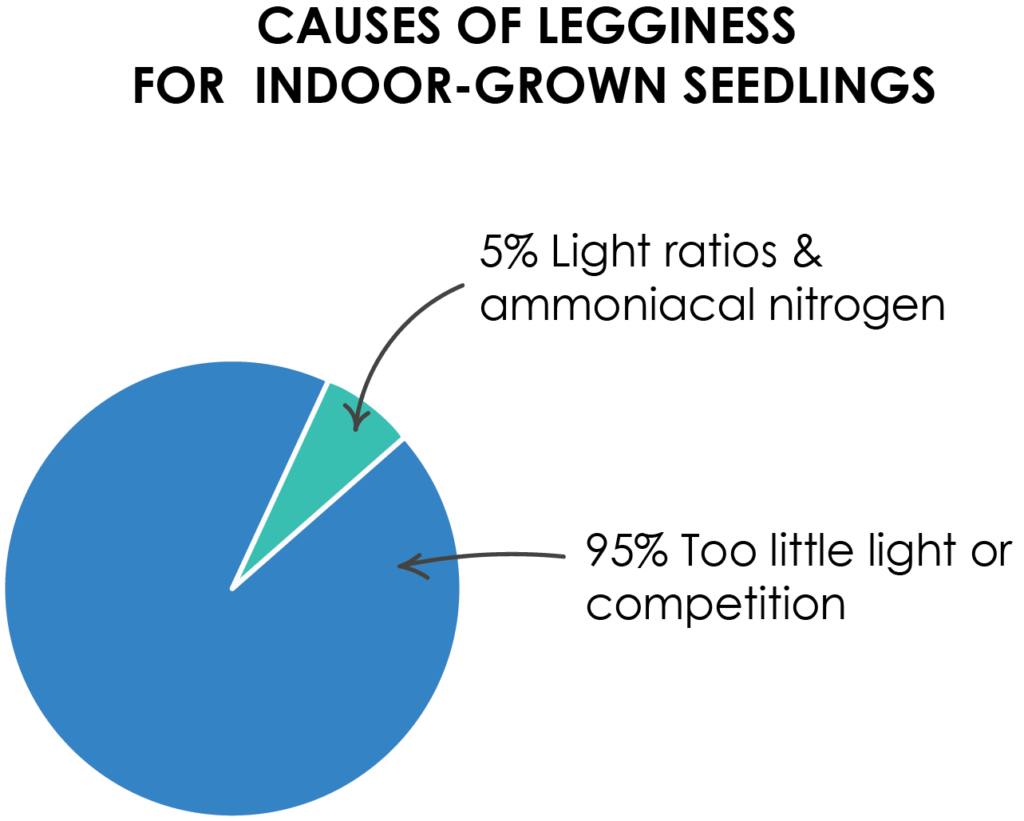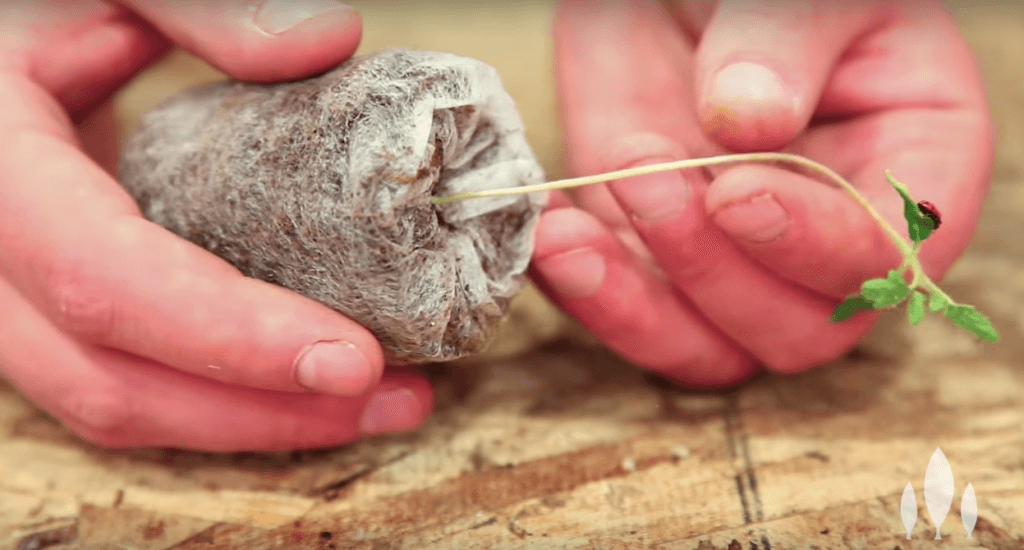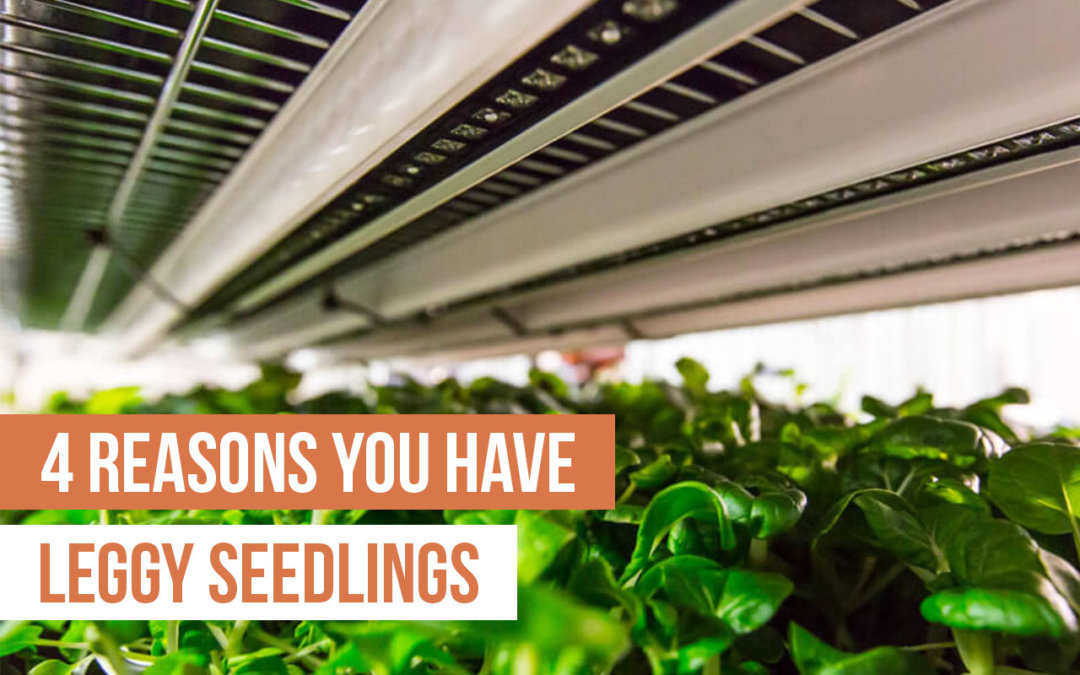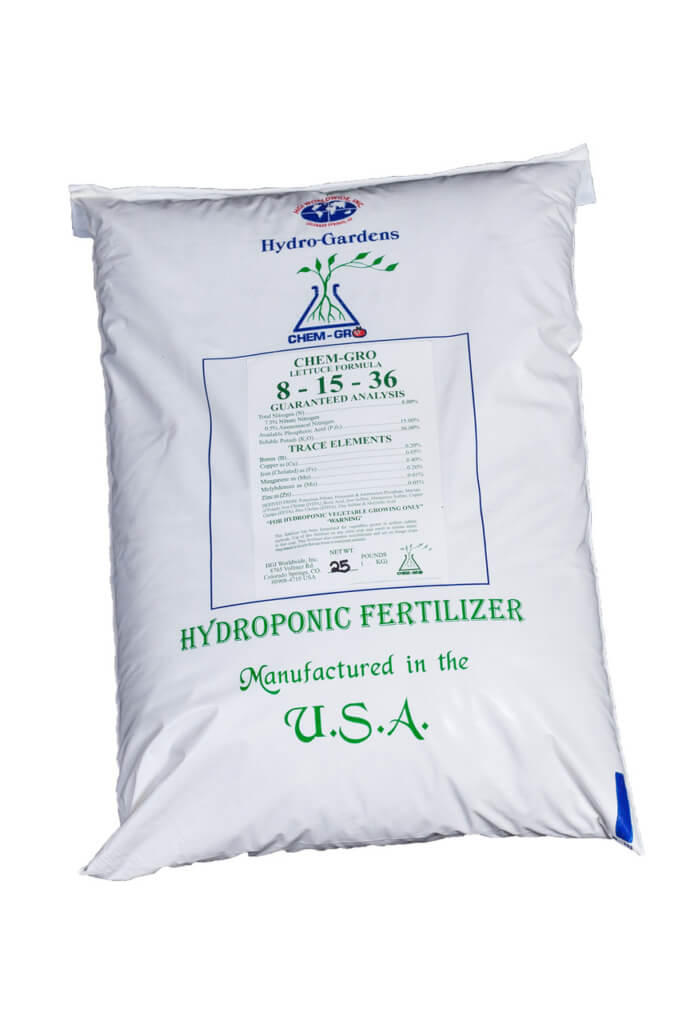If you have spindly and leggy seedlings, you understand the frustration of trying to farm with low-quality seedlings.
Legginess occurs when a seedling’s internode (or stem) grows long and thin. It makes them hard to transplant, easy to break on accident, less likely to grow well, and can result in wild, loose heads of greens that can impact sales. There are four main reasons that seedlings become leggy.
 4 things that lead to leggy seedlings
4 things that lead to leggy seedlings
95% of seedlings are leggy as a result of a lack of light (reason number 1). This should be the first thing that growers fix in the case of legginess.
1) Too little light
As soon as a seed germinates and cotyledons emerge, it grows toward the light source. Without light, it is cued to keep looking for the light and grows a long stem to get to it. (In a natural setting, lack of light means that the seed is still under soil and needs to grow upward to emerge from the soil.) If you give it enough light, the seedling will redirect resources to start growing a stronger stem and foliage.
So exactly how much light does a seedling need? Seedlings need 100 micromoles/sec-m2 of PAR (photosynthetically active radiation) for 12–18 hours a day. To see how far to space artificial lights from the seedlings, see the graphic here.
If you don’t want to measure PAR, just add a light bar or two to your seedling systems. As you probably know, we prefer brand-name light bars like Transcend or Phillips, which are high quality.
2) Shading & competition
Another cause of too little light is shading from the competition. When a lot of seedlings grow together, at a certain stage they get big enough to start shading each other out. This forces the seedlings to grow taller and compete for light.

If this is the problem, then it can be fixed by adding light and transplanting the seedlings at the right time (when their true leaves appear) instead of letting them get bigger than necessary. If a particular crop’s seedlings are just large-statured and shading occurs even before they are ready to transplant, then growers should consider using larger plugs and seedling trays to give the seedlings more space.
3) Wrong kind of light
Artificial lights have different ratios of red to blue light. Red light is the most efficient type of light for growth in the seedling stage, but blue light causes the plants to grow in a more compact fashion. If you have legginess under artificial light, then you might have too much red and not enough blue. If you have enough light and your seedlings are still leggy, try increasing the amount of blue light.
Increasing blue light almost always means increasing the light in general (see reason 1). If you are the odd case where the blue-red ratio of your lights is actually very heavy on the red, then you can either switch over to high-quality lights or add a fluorescent, which is likely heavier on the blue light.
4) Too much ammoniacal nitrogen (too much ammonia in ratio to nitrate)
Different fertilizer mixes have different amounts of ammoniacal nitrogen in relation to nitrate nitrogen. Nitrogen in the form of nitrates is used directly by the plant and contributes to shorter, more compact growth. Ammoniacal nitrogen, on the other hand, is tied to leggy seedlings.
Hydroponic fertilizers will have very little to no ammoniacal nitrogen because they are designed to be immediately available to crops. If you’re using an off-the-shelf fertilizer designed for soil gardening or farming (you shouldn’t), ammoniacal nitrogen or urea might contribute a certain percentage of the nitrogen. Switch over to a hydroponics fertilizer like Dyna-Gro or Chem-Gro. If you must use that fertilizer, however, check the label and make sure that there is no urea or ammoniacal nitrogen.
At what point do leggy seedlings become unusable?
Seedlings that are leggy are often still usable, especially if you catch legginess early on. It becomes an issue when seedling stems get so long that the seedling strays far from the Tower face or surface of the media and droops. These long stalks are likely to cause dripping issues (system water loss), stem curling or coiling and heads that aren’t oriented well. In addition to health, this can be a sales issue. Customers like heads that are clean, neat, and compact.




What should be the ratio of red:blue led light to avoid leggy seedlings and get short and strong leafy lettuce seedlings with more leaf area? I am having leggy problems with my romaine and arugula seedlings purely due to insufficient light. Your valuable advise in recommending the best red:blue ratio for producing strong seedlings.
With warm regards,
Hi Suresh, a ratio of around 70:30 is good, but most seedlings are fine between 85:15 and 95:5. Problems arise when you have more than 30% blue light.
Hi Team ,
How much difference does it make on the growth of seedlings when you use a HO T5 tube in comparison to LED grow bars ?
Regards,
Hi Ashish, T5’s will produce more heat and less light per watt. Capital expense will be lower but operating expense will be higher.
I am planning to grow Lollo lettuce red kind in a grow room for which I have t5 lights 6500k. Do I need to switch over to something else or are they fine.
Hi Rahul,
Those should be alright. If you’d like more information on lighting, please check out the following pages:
How to Give Seedlings Enough Light to Be Healthy
Choosing Fluorescent Grow Lights
What can I do about it. My own tomatoes not commercial.
Put more soil around the stems ? Thanks, great info.
Best, lisa
I’m on my 4th attempt to start my seedlings for my zip grow towers. Each time I get leggy plants that eventually fall over. I am using the trays, plugs, and lights that came with the zip grow starter set. The lights are set up about 5” above the tray and are on 18 hrs per day. Watered daily.